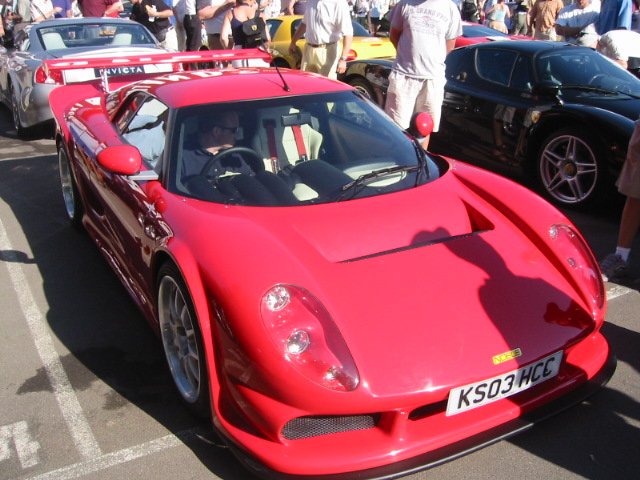A couple of day’s work on the Noble M12 M400GT left me well impressed. The two-seater’s twin-turbo 3-litre Ford Duratec is further upgraded to deliver 425bhp in a machine a little over half the weight of an Aston Martin Vanquish. Caress the throttle and there is no discernible delay. A mighty paw chucks it down the road – much like a Porsche Turbo, only better.
Yet it wasn’t this stonking performance, or the harmony in feel between the throttle, brakes and clutch, or the body control in heave, roll and pitch that really grabbed my attention – it was the fact that in transient manoeuvres the 400GT manages to disguise the fact that there is a large and relatively high-placed C of G mass sitting almost over the rear axle. Having driven several mid/rear engined prototypes with crosswise mounted engines (thus high rear C of G), and no better than 40/60 front-rear weight distribution, you get to look for that lurchy yaw behaviour at the rear.
Making road cars is just about the most difficult way of making a living. Trying to compete with Porsche is a kind of madness
You have to search on a track to find the minimal rear-axle overshoot in transients. The M400GT has some downforce that must help a lot, and the Multimatic- inspired front anti-roll bar is substantially responsible for preserving an understeering balance, but neither necessarily explain the very sound dynamic behaviour; nor does the merely average 40mm difference in section widths between the front and rear Pirelli P Zero tires. There is something else unusually good going on in the suspension department, but I don’t know what.
One massive plus is the 1,060kg kerb weight (same as a 1.6-litre FWD Lotus Elan!) achieved without recourse to trick composites, and so much in contrast to a 1,350kg Lotus Esprit. It was a cyclist friend who pointed out that the lightest aluminium bicycle frame weighs 1kg, no different from the lightest frame of equivalent stiffness in steel. The traumas of making a car out of bits of aluminium are not for Lee Noble. A simple steel tube structure has riveted and bonded alloy panels and a folded steel central tunnel to stiffen it. Apart from the uprights, the suspension components are steel. The chassis unit weighs 190kg, yet without the GRP body panels (some of which are bonded to the chassis) or screen, it manages a tolerable 9,000Nm/deg torsional stiffness. Steel is easy to work, modify, revise, and fix things to – in sum, the ‘steel is real’. Glued aluminium structures seem to have their place in medium volume niche vehicles (Elise/DB9/Vanquish), but Jaguar seems to be the only volume manufacturer to have made serious weight savings with the stuff on the new XJ platform.

The 400GT’s double wishbone suspension design shows the same no-nonsense approach – so well thought out in detail that one would be hard pressed to say how it could be done differently. There was nothing about the dynamic behaviour that suggested that there was something kinematically or elasto-kinematically dubious about the car. Odd, because Noble has never had access to a K&C rig. The same bushes are used at all pick-up points (taken from the Panhard rod position of a well-known off-road vehicle)– just the kind of demand Colin Chapman would make of his designers. Ride comfort isn’t bad, even rather supple if the road surface is not too rough, and certainly better than Porsches that have the same track day objective. The car isn’t type-approved or Thatcham-assessed, which is where the real money would have to be spent, but the fact remains that on a tiny budget, Noble has produced cars serious enough to have sold 400 examples.
Not content with current success, this little Barwell, UK-based concern has now launched the up-market M14. Lee Noble now has a hell of a task on his hands, even though the underpinnings and powertrain for the new car are not changed fundamentally. Being a serious Porsche competitor means that the details, durability, and test procedures matter so much more.
Making road cars is just about the most difficult way of making a living. Trying to compete with Porsche is a kind of madness, but at least Noble is not strangled by big car company layers of management, decision-making inertia, process control and politics. He is a multi-disciplined designer and engineer with an eye for business as well (hence the low-cost South African manufacturing facility). He is a man on a mission and a workaholic. History shows that missionaries can get crucified, but from what I have seen he just might make it.





